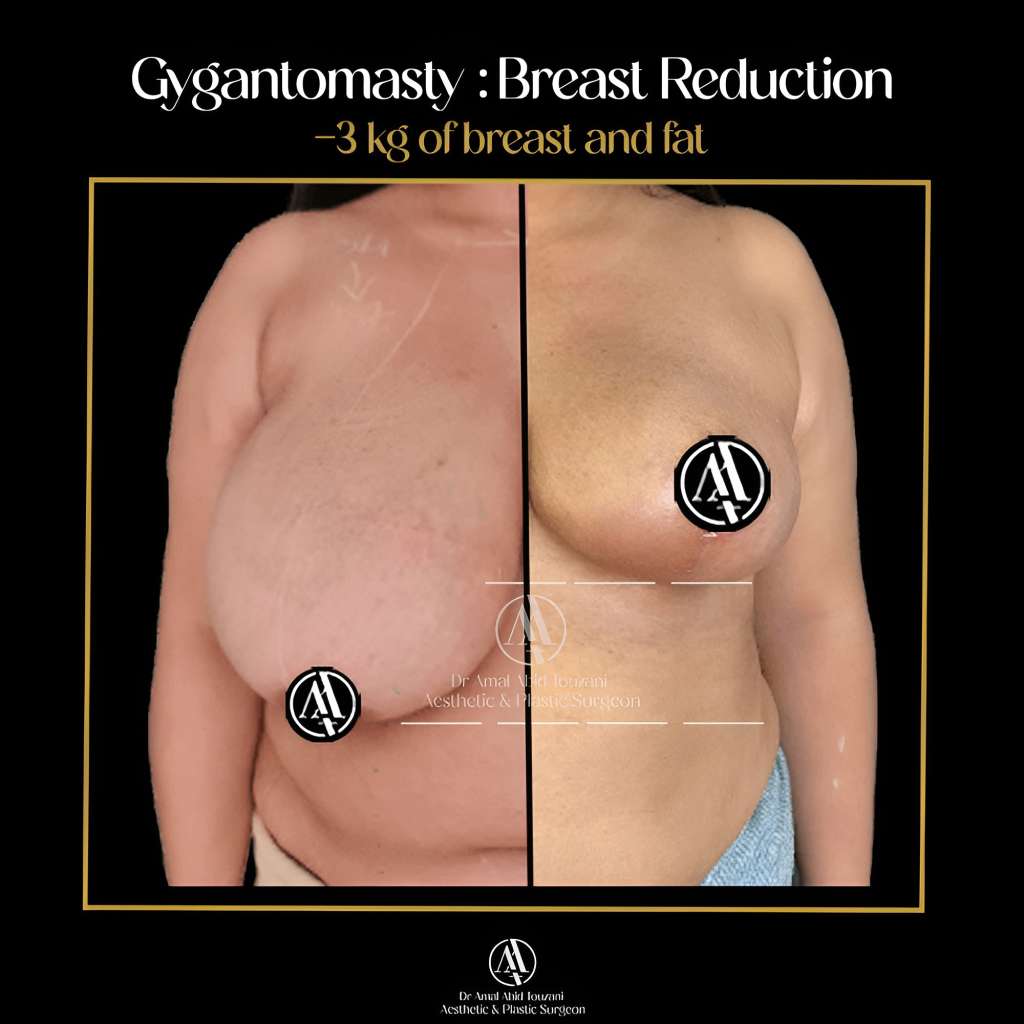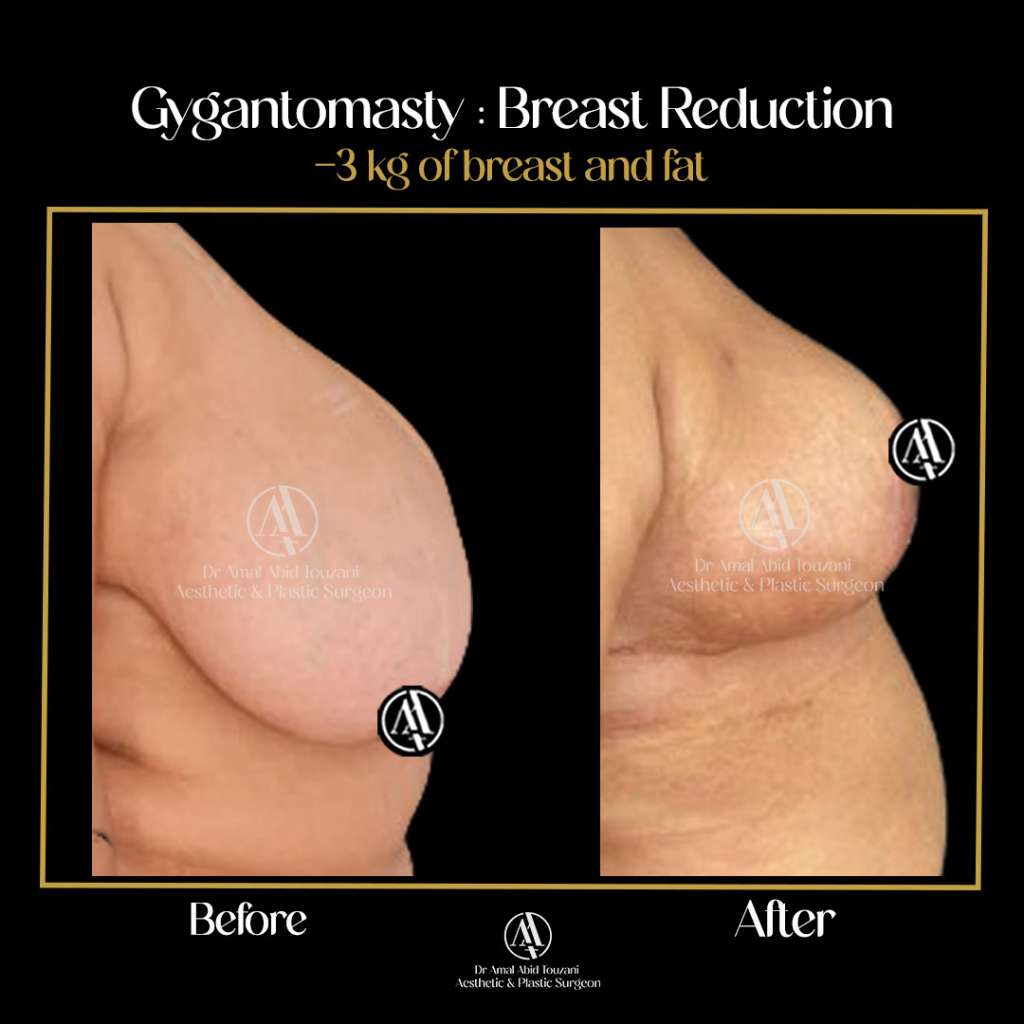
Breast reduction
Breast reduction is a surgical technique used to correct excessively large breasts often associated with ptosis (sagging of the breasts) and a certain degree of asymmetry.
The procedure involves reducing, lifting, symmetrizing, and reshaping the breasts with scars hidden as much as possible within the natural creases, aiming to achieve two harmonious breasts that are proportional to the patient’s morphology (two reduced, uplifted, symmetrized, and reshaped breasts).



Why opt for breast reduction?
If you suffer from breasts that are too large for your body, experience physical discomfort due to the weight of your breasts, or have psychological side effects (such as embarrassment, shame, anxiety, depression), breast reduction may be a solution.
Other signs that may lead to breast reduction include:
- Skin irritation under the breasts
- Difficulty breathing due to the weight of the breasts
- Poor posture
- Deep grooves on your shoulders from bra straps
- Difficulty finding clothing that fits
A BMI >30 is a contraindication for the procedure and requires weight loss before surgical intervention.
Initial Consultation for Breast Reduction
If you’re experiencing any of these issues, you can schedule an initial consultation with Dr. Amal Abid to discuss breast reduction. During the appointment, he will examine your breasts, inquire about your motivations and desired outcomes (in terms of size), and take detailed medical history to assess your candidacy for the procedure.
The clinical examination will evaluate the degree of breast ptosis, size, asymmetry, as well as your BMI.


Procedure for Breast Reduction Surgery
This procedure is performed under general anesthesia in the operating room and typically lasts around 2 hours. It can be done on an outpatient basis or may require an overnight hospital stay for added comfort.
The surgery involves both reducing the breast volume and lifting the breasts to achieve the best possible aesthetic outcome.
Three types of incisions are possible for breast reduction: a periareolar incision (very rarely used for breast reduction), a vertical or “lollipop” incision (around the areola and vertically down the breast), and an inverted T or anchor incision (which includes the previous incisions plus a horizontal incision in the crease beneath the breast) – the latter being the most common due to the degree of breast ptosis. The choice of incision is based on the size and degree of breast ptosis.
If the areola is too large, it can also be reduced during the procedure.
Excess breast tissue is removed and typically sent for histological analysis.
The breasts are then lifted and reshaped to achieve the most aesthetic form possible.
Recovery after Breast Reduction
After a breast reduction, coverage by social security allows for a 15-day postoperative work leave.
Recovery is typically straightforward. Scar care should be performed daily by a nurse until complete healing.
A supportive bra is provided in the operating room and should be worn day and night for 6 weeks.
Lifting heavy objects and engaging in sports are prohibited for 4 weeks.
Final results are typically seen starting from 6 months post-surgery.

